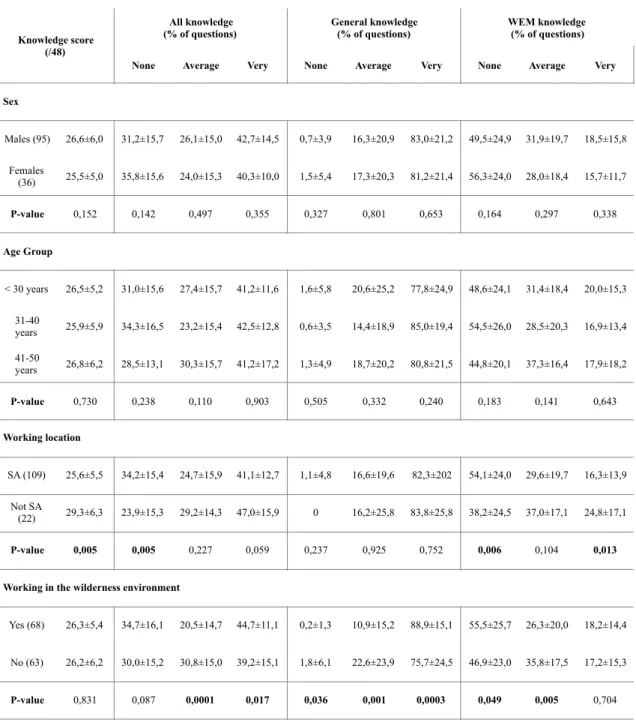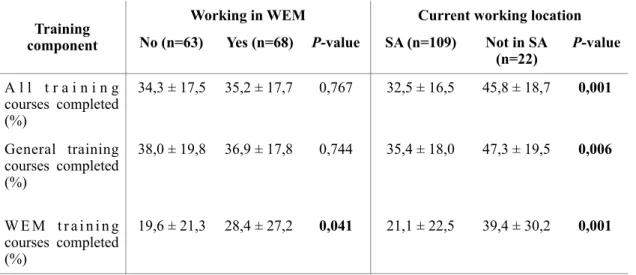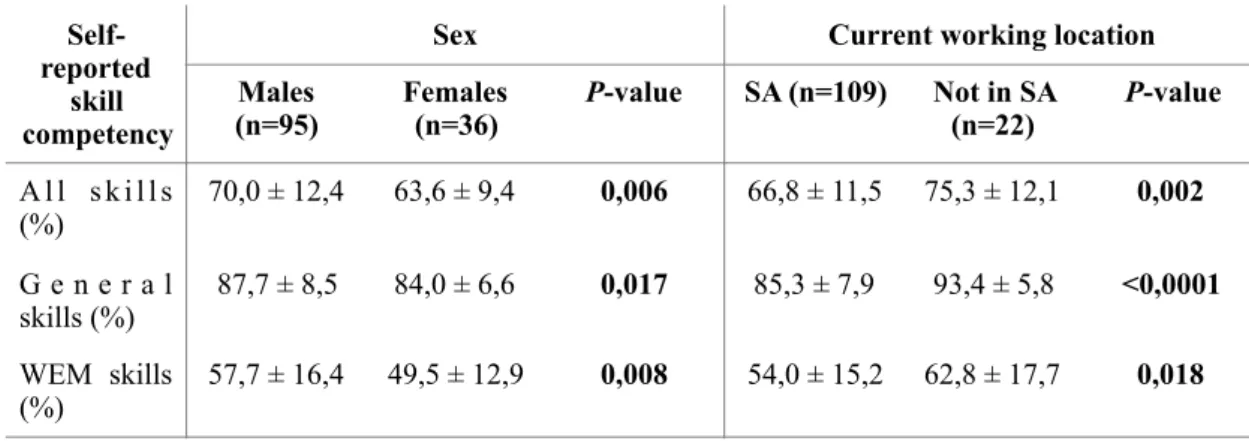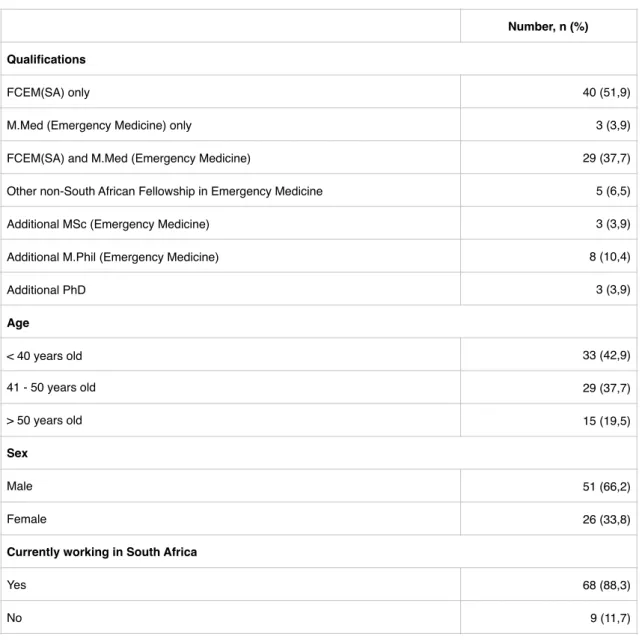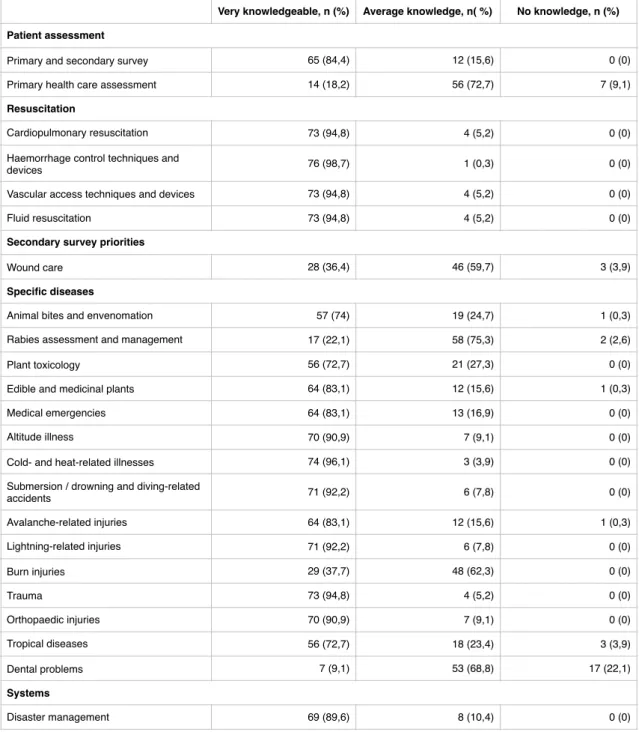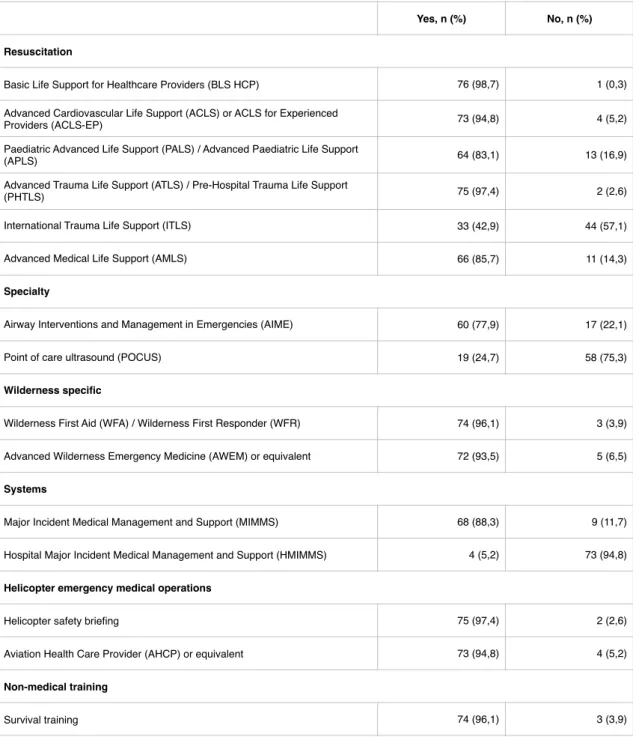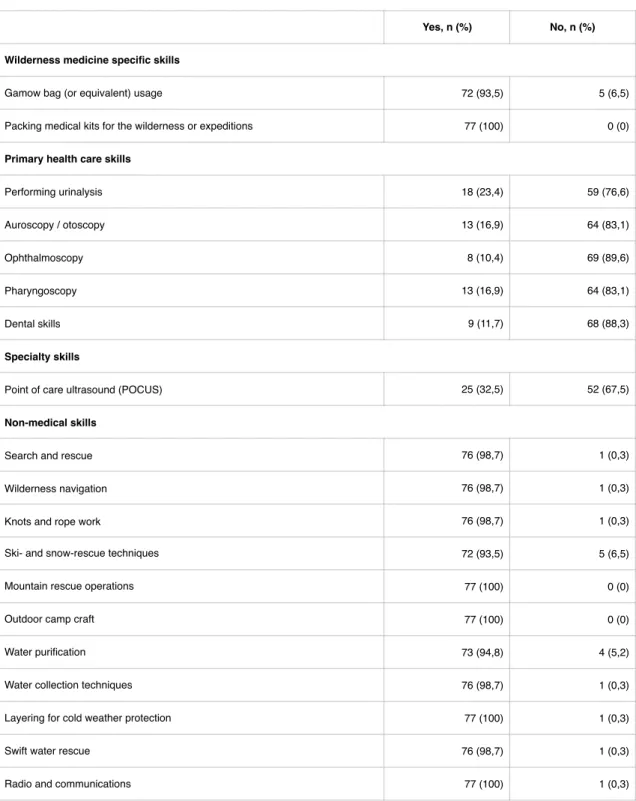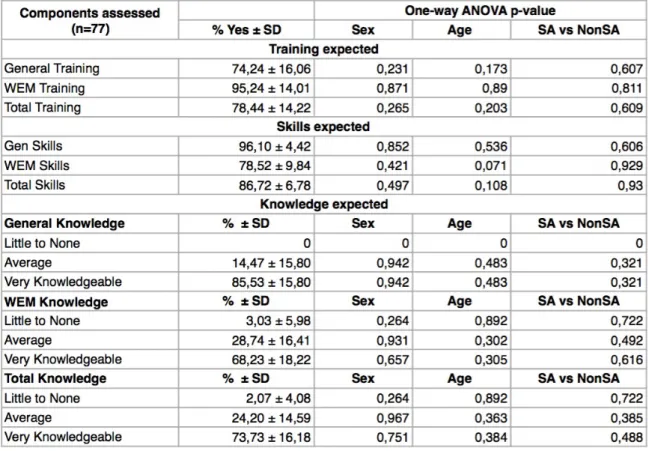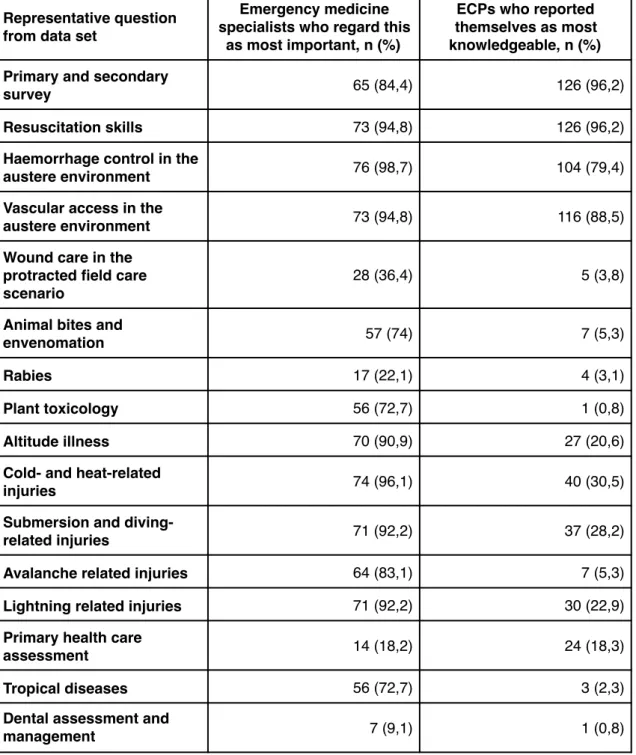EMSSA Emergency Medicine Society of South Africa FAWM Fellowship of the Academy of Wilderness Medicine. In South Africa (SA), there is a paucity of research on resource capacity and capacity for the practice of wilderness emergency medicine. Self-reported descriptors of training, knowledge, and skills related to general and emergency wilderness medical practice were collected.
A survey of emergency medicine specialists on the required levels of knowledge, training and skills for wilderness emergency medicine practice in South Africa: A framework for comparison and curriculum development. PRACTITIONERS HAVE SELF-REPORTED LEVELS OF KNOWLEDGE, TRAINING AND SKILL COMPETENCES WITH EMERGENCY MEDICAL SPECIALIST EXPECTATIONS FOR WILDERNESS EMERGENCIES. Indeed, the highest recognized qualification for wilderness emergency medicine internationally is the Fellowship of the Academy of Wilderness Medicine (FAWM).[94].
Anecdotal evidence has shown a discrepancy in the level of knowledge, training, and skills among ECPs in the wilderness emergency medical environment. This would of course inform any further training and competency level assessments for wilderness medicine practice in SA. This study paves the way for significant research into wilderness emergency medicine in SA.
This research should outline their levels of training, knowledge and skills for wilderness emergency medicine practice.
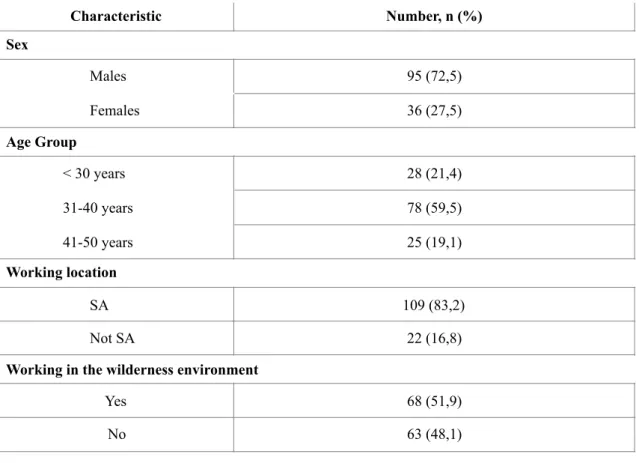
Research proposal 76
This research will provide a reflection of the human resource potential to handle medical emergencies in the wilderness emergency medical environment in South Africa. A survey will be conducted of all practicing pre-hospital care providers, both registered with the Professional Council for Emergency Care Practitioners and the Medical and Dental Council of the Health Professions Council of South Africa. The first part of this study will be to conduct a cross-sectional survey of pre-hospital providers practicing in the wilderness environment to determine their demographics and distribution as well as their levels of knowledge, training and skills in the field.
The second part of this study will be a cross-sectional Delphi survey of South African Emergency Medicine practitioners and Physicians using a convenience and snowball sampling technique to determine the criteria for safe wilderness emergency medicine practice based on core knowledge, training and skills. There is no fixed setting for this study as the surveys will be done by email. For the first part of the study, electronic mails will be sent to Health Professions Council of South Africa registered pre-hospital and medical practitioners who are known to also operate in the wilderness environment.
These practitioners identified for study will be asked to forward the survey to any other practitioner. Practitioners who do not practice in the wilderness environment will be excluded from the study. For the second part of the study, electronic mails will be sent to South African Emergency Medicine Practitioners and Physicians (DipPEC, HDipEM, FCEM, MMed (Emergency Medicine), MSc (Emergency Medicine), MPhil (Emergency Medicine)) with a criteria list developed by the investigator detailing the knowledge, training and skills required for wilderness emergency medicine practice.
Practitioners who do not possess any of the above qualifications will be excluded from the Delphi round. For the first part of this study, a survey will be conducted where a list of unweighted criteria will be submitted to identified participants practicing in the wilderness field. For the second part of the study, a set of criteria (a criterion representing either a topic of knowledge, a training course or a set of skills) developed by the researcher will be forwarded to the Delphi participants and a final list of knowledge, training and skills. will develop.
Descriptive statistics will be used to calculate the percentage of Delphi respondents who accepted the different criterion weightings. The same will be done for the criteria themselves that fell into different weighting categories. For the Delphi round, consent will be obtained from the respondents to participate in the Delphi round.
At each stage of re-submission, respondents will be blind to who the other contributors/respondents are. Kindly review the following criteria which constitute the suggested components to ensure competence in the practice of desert emergency medicine in South Africa.
Post-graduate approval 118
Ethics approval 119
Q14 How knowledgeable should the WEM prehospital provider be about animal bites including envenomation syndromes. Q18 How knowledgeable should the prehospital WEM provider be about the recognition and management of altitude-related illnesses. Q27 How knowledgeable should the WEM prehospital provider be about the presentation, evaluation and management of tropical diseases.
Q34 Whether the prehospital WEM provider must have a valid Advanced Cardiovascular Life Support (ACLS) or ACLS-Experienced Provider (ACLS-EP) certificate. Q36 Must the prehospital WEM provider have a valid Advanced Trauma Life Support (ATLS) or Prehospital Trauma Life Support (PHTLS) certification. Q49 Should the prehospital WEM provider be able to effectively and comfortably perform bag valve mask ventilation.
Q55 Should the prehospital WEM provider be able to comfortably perform splintage using standard splintage devices. Q72 Should the WEM prehospital provider be able to perform field ultrasound (eFAST protocol) if equipment is available. Question 73 Should the WEM pre-hospital provider be able to use soft tissue dressing techniques for minor orthopedic injuries.
Q58 Should the WEM prehospital provider be able to close wounds using various techniques, including suturing. Q63 If the WEM prehospital provider can apply a HALO, Asherman's or other commercial chest seal. Q66 Should the WEM prehospital provider be able to place a formal chest drain in a protracted field care situation.
Q78 Should the WEM prehospital provider be able to perform and interpret auroscopy (otoscopy or instrumented ear examination). Q79 Should the WEM prehospital provider be able to perform and interpret ophthalmoscopy (fundoscopy or instrumented eye examination). Q81 Should the prehospital WEM provider be able to use various commercial or improvised water purification techniques.
Q83 Should the WEM prehospital care provider be able to use layering strategies to survive cold weather? Q88 Must the prehospital WEM provider be able to perform temporary fillings and tooth extractions under dental anesthesia.
Ethics re-approval 120
Survey questionnaire for manuscript I (Chapter 2) 121
Q8 Are you able to perform a complete primary and secondary investigation in medical, pediatric and trauma patients. Q11 How familiar are you with all aspects of vascular access and emergency vascular access techniques? Q17 How knowledgeable are you about managing all types of medical (non-traumatic) emergencies in an austere environment.
Q24 How knowledgeable are you in dealing with all types of major and minor trauma in the austere environment. Q13 How knowledgeable are you about wound care, including the use of antibiotics and wound closure techniques in prolonged field care. Q16 How knowledgeable are you in plant toxicology and the management of herbal toxicities in humans.
Q25 How knowledgeable are you in assessing and managing orthopedic injuries in the wilderness environment when prolonged field care may be required. Question 26 How knowledgeable are you in performing a primary health assessment (history taking, clinical examination, developing a problem list, developing a differential diagnosis list, requesting and performing simple primary health examinations) and developing a management plan. Q71 Are you able to manage the patient's airway using basic and advanced airway management techniques, including rescue equipment, and perform a cricothyroidotomy for a failed airway.
Q68 Are you proficient with commercial pelvic binders, namely T-Pod, SAM Pelvic Sling II and PelviGrip.
Survey questionnaire for manuscript II (Chapter 3) 127
Q65 Must the WEM prehospital care provider be able to correctly and safely insert a needle for decompression of a tension pneumothorax. Q62 Should the WEM prehospital rescuer be skilled in the use of knots and ropes for rope rescue? Q89 Must the prehospital WEM provider be able to litter and carry out patient transport via waste systems.
Data sets 134
Are you able to complete a complete primary and secondary survey in medical, pediatric and trauma patients?*. How well do you know the bleeding control techniques and equipment used in harsh environments?*. How knowledgeable are you about all aspects of vascular access and emergency vascular access techniques?*.
How knowledgeable are you about wound care, including antibiotic use and wound closure techniques. How knowledgeable are you in plant toxicology and the management of herbal toxicities in humans?*. How knowledgeable are you in managing all types of medical (non-trauma) emergencies in the austere environment?*.
How well you know how to deal with diving/drowning injuries and diving-related accidents. How well do you know avalanche injuries, how to recognize them and how to deal with them?* How well do you know lightning injuries, how to recognize these injuries and their complications, and how to manage them?*
How well do you handle all kinds of major and minor trauma in a strict environment?*. How well trained are you to assess and manage orthopedic injuries in a wilderness environment where long-term care in the field may be required?*. How well qualified are you to perform a primary care assessment (history taking, clinical examination, making a problem list, making a differential diagnosis list, requesting and performing simple primary care tests) and developing a management plan?*.
Ali imate veljaven certifikat ACLS (Advanced Cardiovascular Life Support) ali ACLS-Experienced Provider (ACLS-EP)?*. Ali imate veljaven certifikat Pediatric Advanced Life Support (PALS) ali Advanced Pediatric Life Support (APLS)?*. Ali imate veljaven certifikat Advanced Trauma Life Support (ATLS) ali Prehospital Trauma Life Support (PHTLS)?*.
Have you completed a Major Incident Medical Management and Support (MIMMS) course that is current and valid? Have you completed a Hospital Major Incident Medical Management and Support (HMIMMS) course that is current and valid?*.
